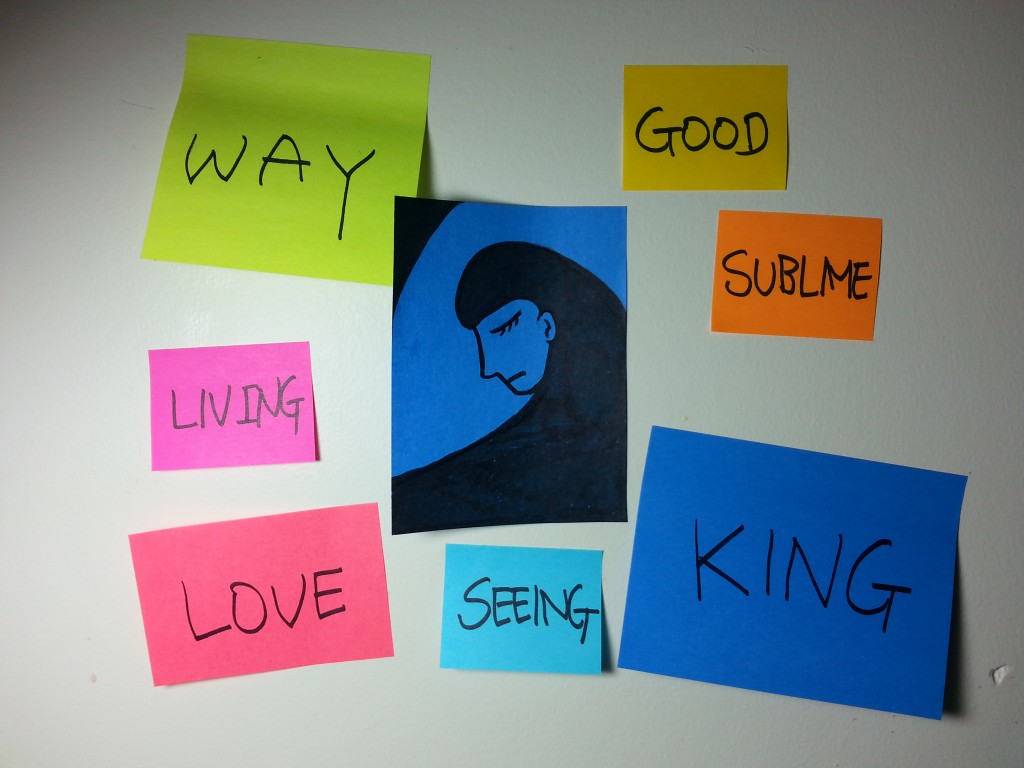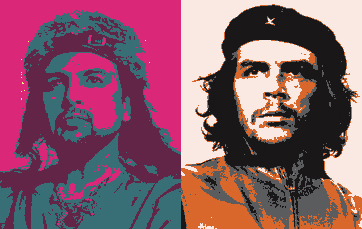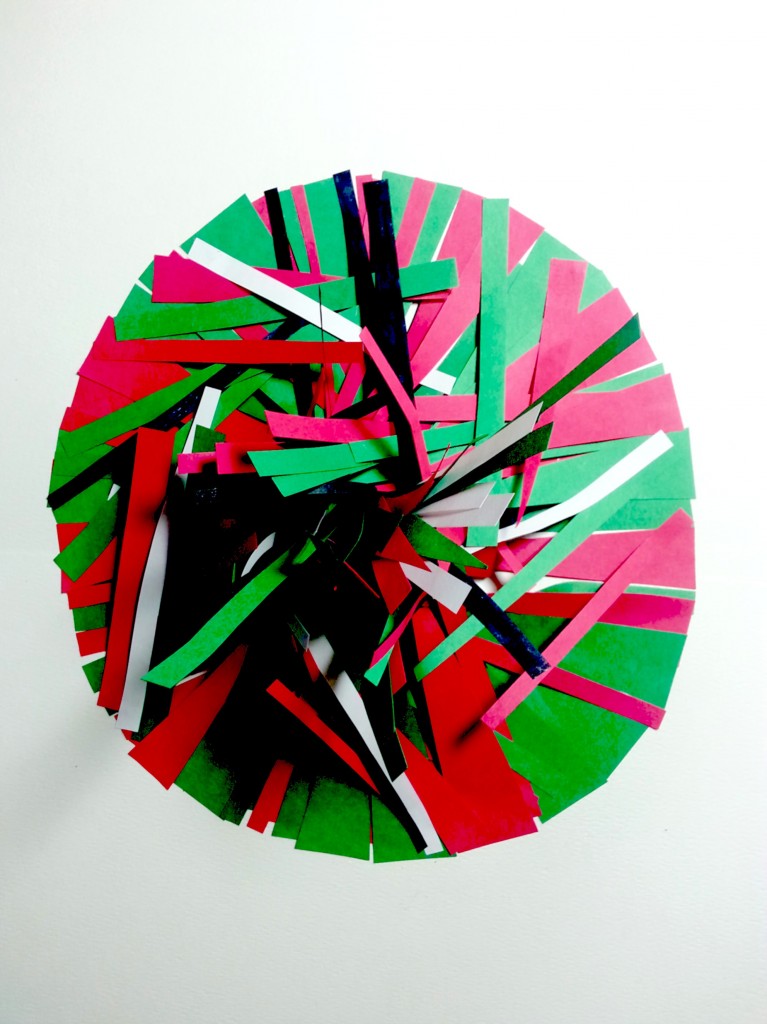Prologue
ø
For the Love of God and His Prophet
Prologue for the blog posts
Yewon Kim
My blog posts could be classified into major three themes; Islam as a religion, Islam in cultural context, Islam in sociopolitical trajectory especially in post-secular world view. I wanted to explore diverse facets of Islam because it exists in diverse forms in every areas of human lives in Muslim countries. This course provided me with valuable insights about the religion which was considered to be a distant domain that I could reach out because of my religious background as a Protestant. I have always been interested in learning about other faith tradition, and fascinated by the beauty of Islamic arts. But it was difficult for me to start the studies about the religion since it’s theology, philosophy, cultural values, sociopolitical influence are vastly profound and complex. This class, taking cultural studies approach, allowed me to think about the religion in a more approachable and realistic way, especially as a person who is deeply interested in cultural aspects of human lives.
I believe human religiosity is universal. All human beings have some kind of religiosity even if they are not confessed believes in certain religious traditions. Every single human beings forms their spirituality in their own way, and has some kind of transcendental nature that can’t be fully described or explored through positivistic or logical language. The understanding of human religiosity may can’t be thoroughly addressed in theoretic, or formulaic way of thinking. However, perhaps the human nature inclining toward an Unseen Being could be more vividly appreciated when we pay attention to the cultural heritage that have been accumulated throughout human history or artistic expressions that goes beyond the realm of logics and can explore mystical aspects of human beings.
Art is an amazing way of exploring our humanness, and the world, and what is beyond the world. I believe art helps one to cultivate one’s spirituality, meditate upon God, and discover one’s own transcendence as a being who is more than a biological creature. I believe the act of creation of art reveals human’s nature that shares the divineness of God. Therefore, it was an interesting experience to reflect upon what we learned in the lectures and go through the process of creating something out of it. The three themes I explored through the blog post are as follows:
First, through the artworks “The Art of the Quran” and “The Ark”, I wanted to reflect upon couple of things among the essential elements of Islam as a religion. First, “The Art of the Quran” is about the sacred text of Muslims. The Quran is considered to be the revealed message throughout the prophet Muhammad and later it was recorded as texts. It is interesting that the message itself was directly stated from the Divine to the prophet and later preserved as the Quran. When I hear the Quran cited in Arabic language, I imagine how it would have been like at the moment the prophet heard the words at first. It is a mystical experience, and I believe, it derives from the artistic creativity of the reciters and the beauty of Arabic language, as well as the ‘divine quality’ of the message itself.
“The Ark” is meant to express the theological reflection on the theme of God’s chosen people. God in Abrahamic religions has the very distinctive character of showing particular favor and blessing on the people He chose. Salvation is given to them and it is for nobody else. The ark of the family in Islamic tradition originally represents the family members of the prophet, but I think it could be interpreted as symbolizing all the believers as specially chosen for God’s grace. I wanted to express my understanding about the theological implication of God’s judgment and salvation, justice and grace for human beings. Also, given the vulnerability of human beings being totally dependent upon God for their existence and redemption, I felt sublime awe in the face of the unfathomable depth of profundity and ‘strange principle’ of God’s salvific work.
“The Play of Symbolism” and “Rockers” are more focused on the cultural or artistic genres for human expression of religiosity. As stated above, art is a powerful way to meditate upon God and to explore one’s spirituality. Also, when it takes a form that is available for the public, it has another quality that allows it to communicate with other people. Therefore, arts can serve a force that can share one’s understanding of God or spirituality, and evolves while interacting with other people engaged in the activity of arts, and forms mutually shared sentiment or understanding on the subject when it is spread to the society. Sometimes, it becomes a ‘being’ that shapes the values, affect the way of thinking in people’s mind. Arts could just exist for the existence of arts itself, but can also serve as a realistic force in a society that is different from imposing or hierarchical powers.
Tazieh solidify the religious conviction through its ritualistic presentation and calls the audiences into the scene which causes them to be the part of the artwork. Tazieh is religious, artistic, and also social expression. Religious in a sense that it remembers the suffering of the prophet’s family and brings the question of theodicy. It is artistic in a sense that it allows tremendous creativity and possibilities for each enactment of the past. Also, it is social since it allows people to participate in the appreciation of the passion play whose themes is about the prophet’s family and respect for them which is a central value for Islamic societies. They identify themselves as the believers who shares the same belief and loyalty to the prophet.
“Rockers” represent two iconic figures in popular culture. One is an artist and one was an activist. But both of them might also be considered as artist and activist at the same time for their creativity that is not bounded by the authoritative way of thinking, and challenging the controlling powers with unlimited exploration of new possibilities that could bring changes in society. Especially, I was impressed by Salman’s contribution to the construction of new identity of contemporary young people that help them find balanced understanding on their tradition and also new waves from the western culture. Many countries, young generations fail to value their traditional values in the face of the foreign influences on their way of thinking. But I think the art and culture is one of the most effective ways to help overcome this challenge.
Lastly, Through “Post-secular Persepolis” and “Moon Becoming”, I explored the issue of the relationship between religion and society (or politics). Also, I wanted to address the issue of the limitation of modernistic way of thinking in search of ‘truth’ or in an attempt of understanding better of humanness.
In the comics Persepolis, Marji is a woman whose views on religion, society and politics is close to modern secularism. Islam in the comics is not so much more than the backdrop of what is happening in the world in sociopolitical context. Islam gives voice to the people in positions, but not in its original piety for God but as adopted and distorted by the controlling groups. In the midst of social maladies, people could rely only on their own reasoning, secular philosophical theories, and protesting against or obeying to the oppressive ideologies or power in reality. God fades way from the scene of the public and lost His presence in the minds of people when they face the world full of injustice, suffering and violence. I wanted to imagine Marji, a modern secular woman, also attempting to explore God in the sacred texts. Post-secularism doesn’t mean that the spirituality of the people can go back to the traditional or orthodox way of believing. It is could be totally different from traditional way of understanding God. But post-secularism admits the failure of modernity and seek to foster one’s own spirituality. As one possible potential, I draw an image that Marji thinking about God as He is described in 100 names of God in Islamic tradition. I chose seven names among them which are already forgotten in the minds of modern people.
“Moon Becoming” attempts to draw a conceptual portrait of Pakistan. M. Iqbal is a kind of philosophical father of nation Pakistan who provided it with the state ideology. He presented a model for the nation that the people need to aspire to. The book “Muslim Becoming” by N. Khan well describes this concept of striving and aspiration for a perfect Muslim state. Khan is a philosophical decedent of M. Iqbal who argued that to be the object of God’s blessing again and therefore to be prosperous, the people should strive to become true Muslims. The problematic situation that many of Muslim countries are facing including poverty, political upheavals, is due to the lack of genuine piety toward God, according to Iqbal’s “Complaint and Answer”. Pakistan is a nation where politics and religions don’t have a clear distinction from one another. Religious claim has strong power in the political arena and God is manifesting His presence in the public sphere. Whether the religion is about real faith in God or about symbolic mode of guiding principle in everyday lives, it hold significance in this present time in the state. As Pakistan is on its ongoing process of becoming, or creative evolution, I wanted to depict its process and efforts through the image of moon becoming a full moon. As believers’ efforts to become perfect believers are often unending journey that could find its meaningfulness only in continuing its aspiration, the dream of becoming a perfect Muslim state could also be a hope for an ideal entity that exist only in the future.
It was a memorable experience that I had a chance to meditate upon the themes that I learnt in the class and reinterpret them through the artistic forms of expression. It enriched my understanding on the topics and broadened my insights on them while I explore the ways to portray them in different dimensions. Transformation of information in the process of creating is an fascinating quality that is observed in the activity of creating new things out of something other than that. The ineffaceable quality that is in the human nature of religiosity often finds its habitation in peoples’s creative and transcendental ability of creating the things that never existed before.



